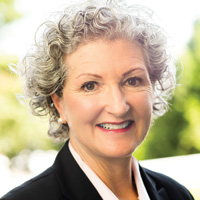Fasten Your Seat Belts: Commercial Real Estate Is Taking a Flight to Quality
A "flight to quality" doesn’t mean jetting off to a tropical resort, it's a strategy that real estate investors are using right now to gain peace of mind. Seasoned CRE buyers are flocking to quality assets with less market and construction risk. Is it time to reposition your investment holdings?


The commercial real estate market has been so strong the past few years that property appreciation alone has turned otherwise marginal deals into windfalls. A low-risk/high-return market atmosphere has conditioned today’s real estate investors into believing outsized return metrics are the new normal.
But real estate, just like the stock market, has its share of ups and downs. And now, after a period of record highs, softening fundamentals are bringing real estate down for a landing.
The Changing Flight Path
A balance between risk and return has come into sharp focus for those using commercial real estate investments to build passive income and long-term wealth. Savvy real estate investors are flocking to “quality” investments — in other words, safer asset classes — that will perform through challenging conditions.

Sign up for Kiplinger’s Free E-Newsletters
Profit and prosper with the best of expert advice on investing, taxes, retirement, personal finance and more - straight to your e-mail.
Profit and prosper with the best of expert advice - straight to your e-mail.
Commercial real estate investments are separated into four general asset classes:
- Core investments have the least perceived risk. These are high-quality, high-occupancy properties with a stable tenant base in thriving city center locations. Core-Plus assets are similar to core but introduce a small “growth” component, due to the building’s quality or a next-to-city-center location.
- Value-add investments offer less cash flow up front but tremendous return potential once the property’s physical and operational issues are corrected. For example, you might invest in a run-down apartment building with marginal tenants. Once renovated and re-tenanted, the property can be sold for a sizable profit.
- Opportunistic real estate targets new land development or a highly distressed property that requires major renovations and/or market improvement. This is known as the riskiest investment type.
In mid-2014, our investment firm purchased a value-add apartment tower in the Seattle metro area. The property suffered from decades of poor management and deferred maintenance; occupancy and rents were substantially below market as a result. Seattle’s economic renaissance had just taken off. We calculated that our all-in cost — purchase, rehab and repositioning — would land us substantially below the cost of buying a core-plus asset in an inferior location at that time. Our capital budget was $35,000+/unit, which paid off through substantial rent and net income growth. At that time, risk was balanced against projected returns that could be achieved in a rapidly escalating market.
Today, this property’s asset class has changed from value-add to core-plus. Its market value is substantially above our all-in cost, as the strategic purchase, strong management, eye for design, and a high-growth market all came together to benefit our tenants and investors.
Coming in for a Landing
Our Seattle metro asset illustrates the roaring good times that investment real estate has enjoyed since the economic downturn. Property values have approximately doubled since 2009 in certain markets, according to the Green Street Commercial Property Price Index. But the tide is turning, and some investors — hoping to extend the run of high returns — are disregarding new associated risks.
As a rule, core and core-plus real estate is the most safely positioned to produce consistent cash flows during a slowing or contracting economic cycle. Would we purchase our Seattle deal at today’s value-add prices if it were in its 2014 condition? Very likely the answer is “no,” given the risk. Labor and material costs to renovate in 2019 are 20% to 25% higher than five years ago, and market growth is flattening.
Upgrade to First Class
These recent market inflections are presenting new opportunities to purchase core-plus, “quality” assets at an attractive price. According to Neil Schimmel, CEO of Investors Management Group, “Value-add properties have been a red-hot trend for several years. Multifamily investors across the country are chasing after vintage assets in outlying suburbs, which has pushed prices closer to where core-plus assets are trading. This is great news for buyers looking to capture the safety of core-plus assets at a competitive price.”
In cities with oversupply or weak demand, core and core-plus properties typically outperform the market by delivering the best value for tenant rent dollars. These investments may generate lower returns in comparison to more speculative deals, but well-leased core assets in desirable city centers have historically held their value in down real estate cycles.
Many properties purchased early in this cycle and sold between 2016 and 2018 achieved high annual rates of return (exceeding 20%) and a doubling of the invested equity. Today, those kinds of returns are only likely to be achieved through elevated deal risks.
I encourage investors to take a more disciplined approach in evaluating location, pricing and intrinsic real estate qualities to reduce return volatility. At this point in the cycle, a flight to quality income-producing real estate could mean less turbulence in a stormy investment environment.
Get Kiplinger Today newsletter — free
Profit and prosper with the best of Kiplinger's advice on investing, taxes, retirement, personal finance and much more. Delivered daily. Enter your email in the box and click Sign Me Up.

Karlin is Principal and Executive Vice President of Investors Management Group, a privately held real estate firm headquartered in Woodland Hills, Calif. IMG has transacted over $1.6 billion nationally in this cycle, with over $500 million in multifamily assets (3,000 units) currently under management nationwide. She holds an MBA from the University of Oregon.
-
 Stock Market Today: Stocks Gain on Tech, Auto Tariff Talk
Stock Market Today: Stocks Gain on Tech, Auto Tariff TalkThe Trump administration said late Friday that it will temporarily halt tariffs on some Chinese tech imports.
By Karee Venema
-
 Sam's Club Plans Aggressive Expansion: Discover Its New Locations
Sam's Club Plans Aggressive Expansion: Discover Its New LocationsSam's Club expansion plans will open up to 15 new stores each year. Learn where they plan to open in 2025.
By Sean Jackson
-
 How Baby Boomers and Gen Xers Are Redefining Retirement Living
How Baby Boomers and Gen Xers Are Redefining Retirement LivingBoth generations need to embrace change and leverage real estate as a dynamic asset in their retirement planning. Here's how financial advisers can help, too.
By David Conti, CPRC
-
 How Good Advisers Manage Risk in Challenging Markets
How Good Advisers Manage Risk in Challenging MarketsThey understand the difference between what might be real challenges to an investor's strategy and fear brought on by market volatility.
By Ryan L. Kirk, CFA®
-
 Financial Planning's Paradox: Balancing Riches and True Wealth
Financial Planning's Paradox: Balancing Riches and True WealthWhile enough money is important for financial security, it does not guarantee fulfillment. How can retirees and financial advisers keep their eye on the ball?
By Richard P. Himmer, PhD
-
 A Confident Retirement Starts With These Four Strategies
A Confident Retirement Starts With These Four StrategiesWork your way around income gaps, tax gaffes and Social Security insecurity with some thoughtful planning and analysis.
By Nick Bare, CFP®
-
 Should You Still Wait Until 70 to Claim Social Security?
Should You Still Wait Until 70 to Claim Social Security?Delaying Social Security until age 70 will increase your benefits. But with shortages ahead, and talk of cuts, is there a case for claiming sooner?
By Evan T. Beach, CFP®, AWMA®
-
 Retirement Planning for Couples: How to Plan to Be So Happy Together
Retirement Planning for Couples: How to Plan to Be So Happy TogetherPlanning for retirement as a couple is a team sport that takes open communication, thoughtful planning and a solid financial strategy.
By Andrew Rosen, CFP®, CEP
-
 Market Turmoil: What History Tells Us About Current Volatility
Market Turmoil: What History Tells Us About Current VolatilityThis up-and-down uncertainty is nerve-racking, but a look back at previous downturns shows that the markets are resilient. Here's how to ride out the turmoil.
By Michael Aloi, CFP®
-
 Could You Retire at 59½? Five Considerations
Could You Retire at 59½? Five ConsiderationsWhile some people think they should wait until they're 65 or older to retire, retiring at 59½ could be one of the best decisions for your quality of life.
By Joe F. Schmitz Jr., CFP®, ChFC®